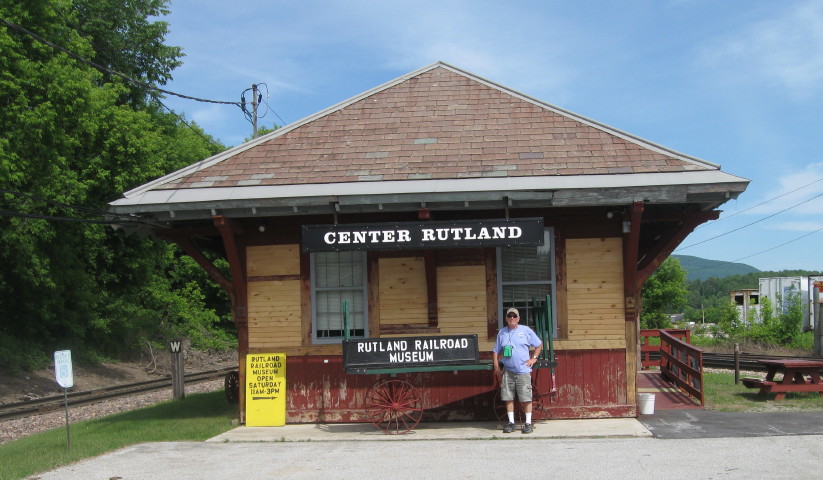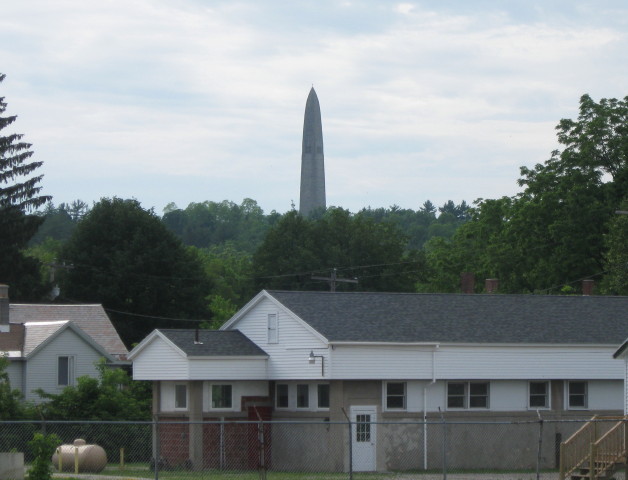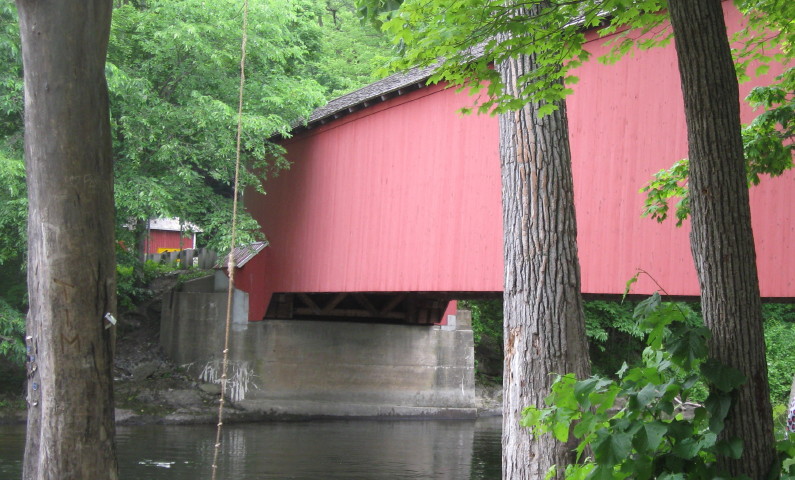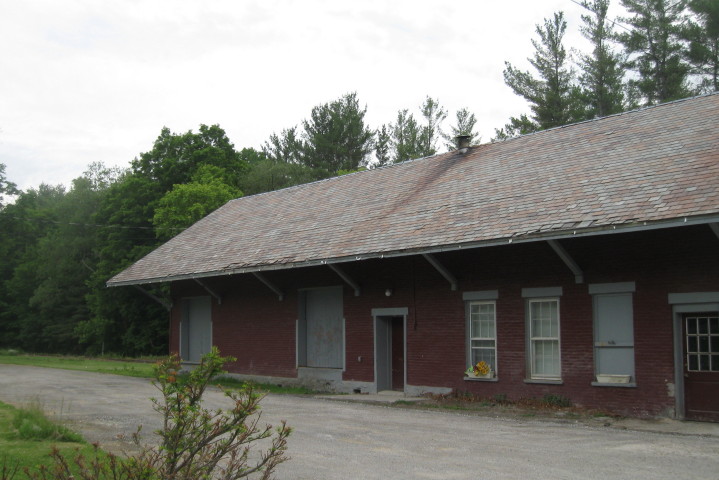As late
as 1949, the Rutland Railroad had a water
station here, and a siding 52 cars long. A
house track ran around the back side of the
large wooden station (built 1902) to serve
local customers, a track that still exists.
Today, the original Rutland Railroad freight
station in now part of Miles Lumber, a company
that in the past logged, milled and sold
timber throughout the area.
Tourism
also grew with the arrival of the railroad,
and the Manchester area developed a number of
summer resorts. Today, there are a number of
factory outlet stores in the area, still
drawing tourists. One of the most interesting
local businesses is Orvis, a family-owned
retail and mail-order business specializing in
high-end fly fishing, hunting and sporting
goods. This company was founded in 1856 and is
considered to be the oldest mail-order
retailer in the United States.
Let's wrap the day up with
one last stop and depot.
MP
45.07 Wallingford Rutland
Railroad Station - The old train station,
built in 1867, retired in 1951, and sold to
the local fire department in 1958, is on the
east side of the tracks just north of Florence
Avenue. Between the two is a bridge over
Roaring Brook. Roaring Brook flows off the
south slope of Bear Mountain and continues
west through Wallingford and into Otter Creek.
The station has an unique bay window on the
south end and a freight house on the north
end.
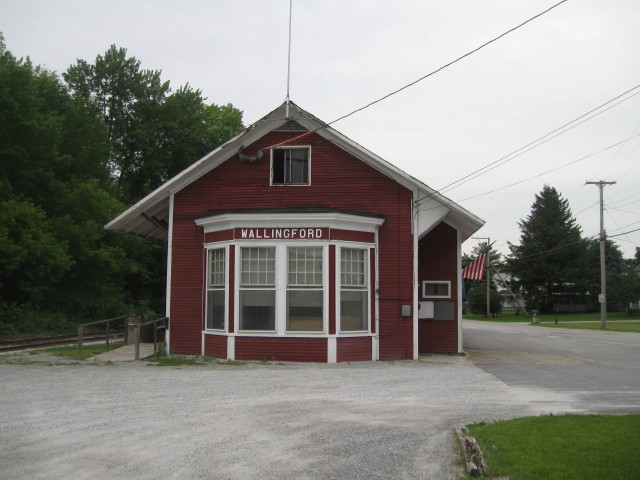
The Village of
Wallingford did have one interesting
industry - pitchforks. Founded in
1835, the Batcheller Works became on of
the first pitchfork manufactures in the
country. With the arrival of the railroad,
their products were soon being sold
nationwide. In 1869, a second pitchfork
factory, Franklin Post, opened at
Wallingford. In 1902, the American Fork
& Hoe Company (True Temper) of
Cleveland, Ohio, acquired the Batcheller
Works. The Wallingford Manufacturing
Company, the heir to Franklin Post's
manufacturing plant, was incorporated in
1902, then acquired by the Wellard Vale
Manufacturing Company of Canada in 1910.
For many years, ash logs have been brought
to Wallingford for the production of True
Temper handles, and piles of the logs can
be seen north of the factory. By 1930, the
pitchfork factory had been converted from
the manufacture of farm implements to golf
clubs and other recreational products.
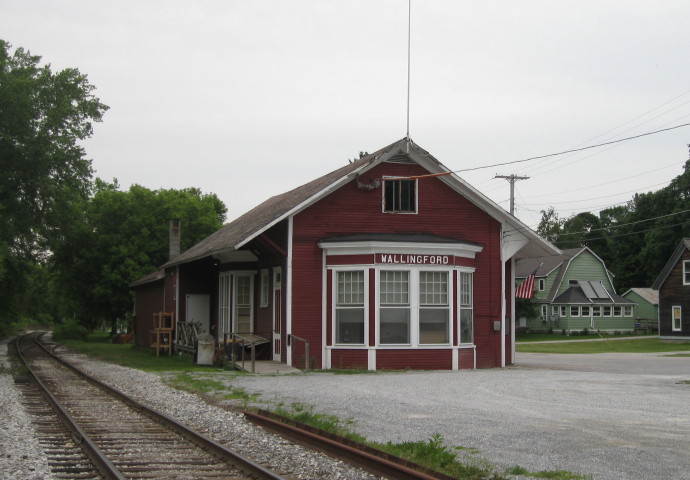
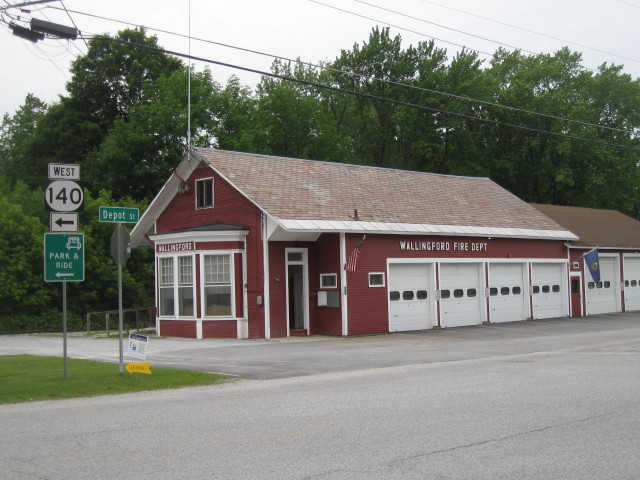
This is the intersection of Railroad Street
(running beside the tracks) and Depot Street
(coming from downtown).
It is was now around 7:00
PM and time to head north on US 7 to Rutland
and the motel.
For
dinner, we decided to walk to the next block
and try the Ponderosa Steakhouse located on US
RT.7 S. I got the Chop steak/gravy/mushrooms
with baked potato, salad and ice tea. Both of
us enjoyed our meal and chatted with several
fellow conventioneers about trips taken and to
be taken. Afterwards it was the short walk
back to the motel and our room.
The end
of a long day full of all new things.
Big day
tomorrow - Train ride thru the Adirondacks in
my first dome car ride.
